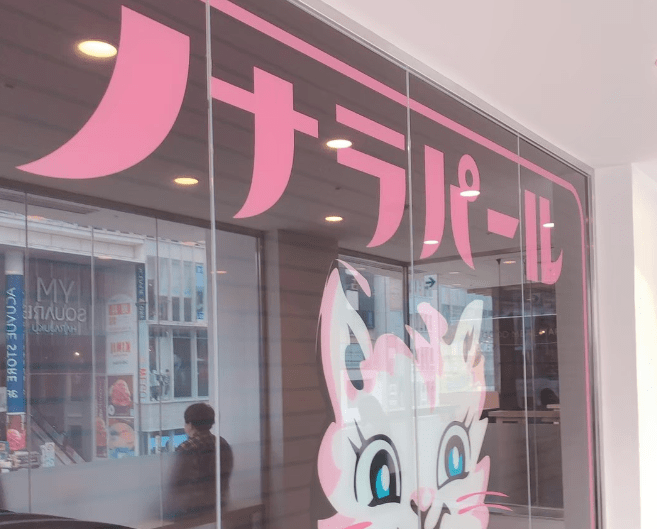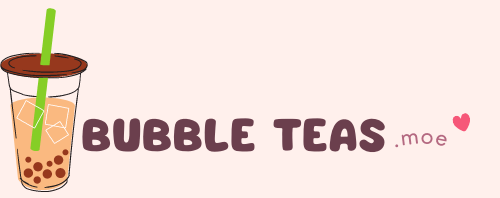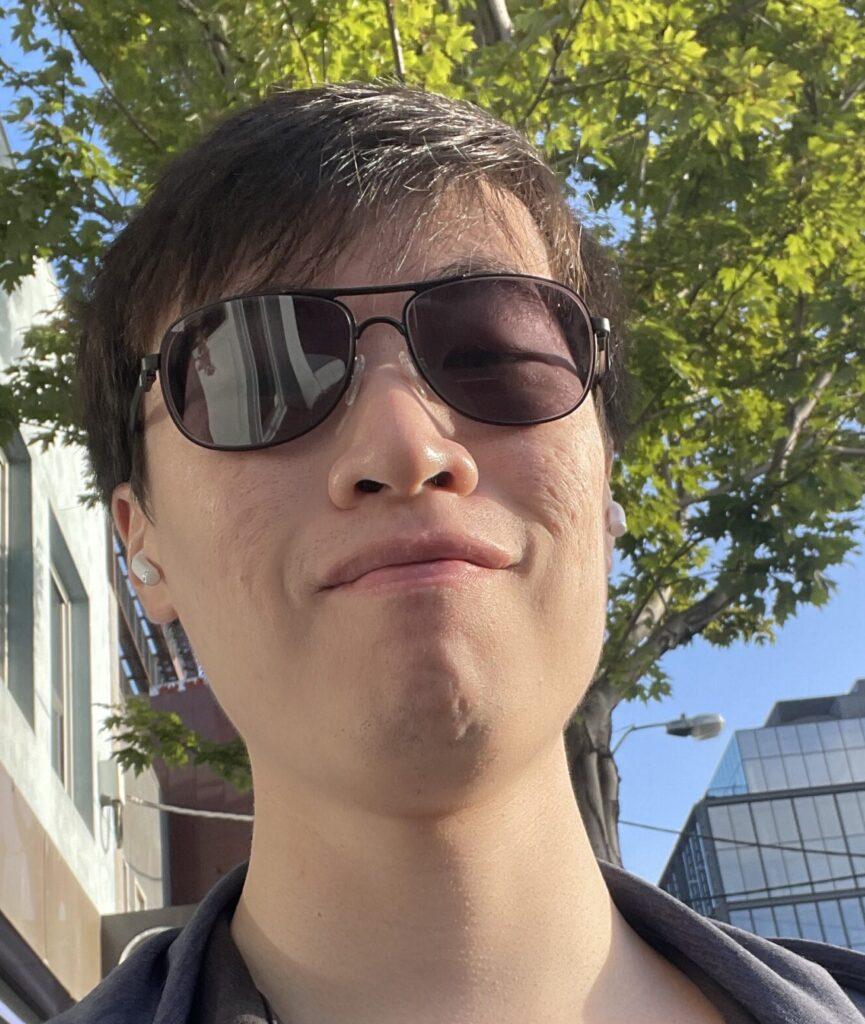When strolling through the vibrant streets of Harajuku or Shibuya, one may notice a prevalent trend in Japan’s beverage culture. It’s the rise of bubble tea shops! Known for its signature chewy tapioca pearls, this refreshing drink has taken Asia by storm. But here arises an intriguing question: Is bubble tea Japanese?
The answer might surprise you – bubble tea, also known as boba, is not originally from Japan but rather originated in Taiwan in the early 1980s. So why do we often associate it with Japanese culture?
Despite its Taiwanese roots, boba has found a warm welcome into the hearts (and stomachs) of many Japanese people and firmly embedded itself within Japan’s kawaii culture.
You’ll find many names for this popular drink – boba milk tea, pearl milk tea, even “tapioca” is used to refer to it colloquially in some parts of Japan. Whatever you call it, boba is essentially a mix of black or oolong tea with milk (dairy or non-dairy like coconut milk), brown sugar syrup and those irresistible chewy tapioca pearls.
While traditional Taiwanese style bubble tea remains popular among consumers worldwide including Japan’s locals and tourists alike; there have been innovative additions that reflect the influence of local taste preferences too. These include uniquely Japanese variants like matcha green pearl milk tea which combines Taiwan’s iconic beverage with beloved traditional Japanese home ingredients.
In addition to traditional options like pearl milk tea, Japanese bubble tea shops have also introduced innovative variations such as rock salt cheese foam topped drinks or non-dairy alternatives for those with dietary restrictions. With its diverse range of flavors and toppings, bubble tea continues to captivate Japanese consumers who embrace both traditional elements and trendy influences within their kawaii culture.
If you’re curious about trying this delightful beverage or even making it at home yourself, there are plenty of resources available online where you can learn how to make your own Japanese-style bubble teas using quality ingredients. So why not join in on the trend and experience the burstiness of flavor that Japanese boba brings?

The History of Japanese Bubble Tea
Boba tea, also known as bubble tea, has become a beloved beverage around the world. But is it truly a Japanese creation? Let’s delve into the history of boba tea culture in Japan.
- Origins in Taiwan: Contrary to popular belief, boba tea did not originate in Japan but rather in Taiwan. In the early 1980s, Taiwanese teahouses started adding tapioca pearls to their teas, creating a unique and refreshing drink.
- Introduction to Japan: It wasn’t until the late 1990s that boba tea made its way to Japan’s shores. As Tokyo became an epicenter for global culinary trends, bubble tea shops began popping up across the city.
- Rapid Popularity: Boba tea quickly gained popularity among Japanese people who were drawn to its fun textures and wide variety of flavors. Today, you can find numerous bubble tea shops scattered throughout Tokyo’s vibrant neighborhoods like Harajuku and Shibuya.
- A Unique Twist: While traditional Taiwanese boba uses black or green teas as a base, Japanese bubble teas have embraced experimentation with different flavors and ingredients. From classic milk teas made with oolong or jasmine teas to creative combinations like coconut milk or brown sugar syrup-infused drinks – there’s something for everyone.
- The Rise of Cheese Foam: One distinct feature of Japanese boba is the introduction of cheese foam topping or “salted cheese foam.” This creamy layer adds a savory element that beautifully complements the sweetness of the drink.
- Japanese Home Recipes: Many people have embraced making homemade boba milk tea using DIY kits readily available online or by following traditional recipes found on cooking websites and social media platforms.
- Kawaii Culture Influence: The kawaii culture prevalent in Japan has played a role in enhancing the visual appeal of boba beverages. Adorable characters and vibrant colors often adorn the cups, making them not only delicious but also visually appealing.
Despite its Taiwanese origins, boba tea has undeniably become a beloved part of Japanese culture. Whether you call it boba or bubble tea, one cup of this delightful drink continues to captivate taste buds and quench thirsts across Japan’s bustling cities.

Different Types of Japanese Boba
Japanese boba, also known as bubble tea, has gained popularity in Japan over the years. This refreshing drink originated in Taiwan and made its way to Japan, captivating the taste buds of many. Let’s explore the different types of Japanese boba that you can find in Tokyo and beyond.
- Matcha: This is a traditional Japanese green tea flavor that is often used in bubble tea. It has a unique, slightly bitter taste that is balanced out by the sweetness of the milk and tapioca pearls.
- Genmaicha: This is a type of Japanese green tea that is combined with roasted brown rice. The rice gives the tea a nutty flavor that is quite unique.
- Royal Milk Tea: This is a popular flavor in Japan. It is made with black tea, milk, and sugar, and it has a rich, creamy taste.
- Wintermelon: This is a unique flavor that is not commonly found outside of Asia. Wintermelon has a sweet, melon-like taste.
- Hokkaido: This flavor is named after the region in Japan known for its dairy products. Hokkaido milk tea has a creamier taste compared to other milk teas.
- Okinawa: This is a type of brown sugar milk tea. The brown sugar gives the tea a deep, caramel-like flavor.
- Hojicha: This is a type of Japanese roasted green tea. It has a toasty, slightly caramel flavor that is quite different from other green teas.
- Creme Brulee Bubble Tea: This flavor is inspired by the classic French dessert, combining creamy milk tea with a caramelized sugar topping.
- White Rabbit Candy Bubble Tea: This flavor is inspired by the popular Chinese candy, White Rabbit. It has a sweet, milky flavor that is reminiscent of the candy.
- Korean Banana Milk Bubble Tea: This flavor is inspired by the popular Korean banana milk drink. It has a sweet, banana flavor.
Please note that availability of these flavors can vary depending on the bubble tea shop, popular shops might not be the same shops serving the local market try out a couple of shops that do not have english menus, the drink is usually served the same as in the US but you might be surprised by smaller stores outside of your regular tea chains. Your go-to drink in Japan has definitely got to be some of these unique flavors you cannot find in the US, be brave and try out something new!
The popularity of bubble tea in Japan continues to grow as more people embrace this unique beverage. While it may have originated in Taiwan, its presence in Japan has become significant, with numerous specialty shops dedicated solely to serving a wide range of creative and delicious boba concoctions.

Japanese Bubble Tea Ingredients That Are Only Found in Japan
What’s the first thing that pops into your mind when you think about Japanese boba? If it’s chewy tapioca pearls swimming in a refreshing drink, you’re not alone. This popular beverage, also known as bubble tea or pearl milk tea, has gained significant popularity in Japan and across Asia. However, is bubble tea Japanese? The answer might surprise you.
Here are some key ingredients found in Japanese Bubble Tea but can be imported to American Stores:
- Azuki Bean: Azuki beans are small, reddish-brown beans with a sweet flavor. They are often made into a paste and used as a topping in bubble tea, adding a subtle flavor and texture.
- Mung Bean Paste: Similar to azuki beans, mung beans are also made into a paste and used as a topping. They have a slightly sweet and nutty flavor.
- Popping Boba with unique flavors: These are spheres filled with fruit juices or syrups. When you bite into them, they burst, releasing the juice. They come in various flavors like sakura which cannot normally be found in the US.
- Konjac Jelly: This is a type of jelly made from konjac flour. It has a firm, chewy texture and can come in various flavors.
- Cocoa Chips: Used in “Bonsai” Garden Tapioca Milk Tea at The Alley Lujiaoxiang, these chips add a contrasting crunchy texture to the chewy tapioca pearls.
- Rock Salt Cheese: Saisabo offers a unique Rock Salt Cheese Tea, which combines the creamy texture of cream cheese foam with the fresh, light taste of tea.
- Cotton Candy: Saisabo’s Fluffy Milk Tea is a dessert-like beverage that includes ice cream, mango, tapioca pearls, and cotton candy.
- Yogurt: CoCo Fresh Tea & Juice offers drinks with yogurt, providing a tangy flavor and creamy texture.
- QQ: Chatime offers a mix of coconut jelly and tapioca pearls, known as “QQ”, for a unique texture experience.
- Chocotapi: Pearl Lady offers chocolate-flavored tapioca pearls, adding a sweet and chocolaty flavor to the drink.
- Colored Tapioca Pearls: Pearl Lady also offers pastel-colored tapioca pearls, adding a visually pleasing element to the drink.
If you’re keen on trying out this iconic Asian beverage at home learn how to make your own version by sourcing ingredients from local Asian grocery stores. Remember though – no two cups will ever taste quite the same given all the potential combinations! You may be able to source some of these ingredients online via a variety of Japanese importers or Japanese speciality stores.

The Many Names of Japanese Bubble Tea
Bubble tea in Japan, a delightful beverage that has taken the country by storm, is known by several names, each reflecting the unique ingredients and flavors that make up this popular drink. Remember these next time you want to order boba tea in japanese.
タピオカドリンク (Tapioka Dorinku): The most common name for bubble tea in Japan is “Tapioka Dorinku,” which directly translates to “Tapioca Drink.” This name emphasizes the chewy tapioca pearls that are a signature ingredient in bubble tea. These pearls, also known as boba, are made from tapioca starch derived from the cassava root. The pearls are cooked until they become soft and chewy, and then sweetened with sugar syrup. The result is a delightful, gummy texture that adds a fun element to the drink.
ロイヤルミルクティー (Roiyaru Miruku Tī): Another popular name for bubble tea in Japan is “Roiyaru Miruku Tī,” or “Royal Milk Tea.” This version of bubble tea is made with black tea, milk, and sugar, resulting in a rich, creamy taste. The tea is typically brewed strong, allowing it to stand up to the sweetness of the milk and sugar. The result is a balanced, flavorful drink that is both refreshing and satisfying.
抹茶ミルクティー (Matcha Miruku Tī): For those who prefer a more traditional Japanese flavor, there is “Matcha Miruku Tī,” or “Matcha Milk Tea.” This version of bubble tea uses matcha, a type of powdered green tea that is traditionally used in Japanese tea ceremonies. The matcha adds a unique, slightly bitter taste that is balanced out by the sweetness of the milk and tapioca pearls. The result is a drink that is both familiar and exotic, offering a taste of traditional Japanese culture in a modern, trendy format.
黒糖ミルクティー (Kokutō Miruku Tī): For a deeper, more complex flavor, there is “Kokutō Miruku Tī,” or “Brown Sugar Milk Tea.” This version of bubble tea uses brown sugar, giving the tea a deep, caramel-like flavor. The brown sugar is cooked until it caramelizes, adding a rich, toasty flavor to the drink. The result is a sweet, satisfying beverage that is perfect for those with a sweet tooth.
フルーツティー (Furūtsu Tī): For a lighter, more refreshing option, there is “Furūtsu Tī,” or “Fruit Tea.” This version of bubble tea often includes various fruit flavors and popping boba, which are spheres filled with fruit juices or syrups that burst when bitten into. The result is a refreshing, fruity drink that is perfect for hot summer days.
ミルクティー (Miruku Tī): The simplest and most straightforward name for bubble tea in Japan is “Miruku Tī,” or “Milk Tea.” This name refers to the basic version of bubble tea, which is made with tea, milk, and tapioca pearls. Despite its simplicity, this version of bubble tea is incredibly popular due to its perfect balance of flavors and textures.
チーズティー (Chīzu Tī): A more recent addition to the bubble tea scene in Japan is “Chīzu Tī,” or “Cheese Tea.” This version of bubble tea includes a layer of creamy, salty cheese foam on top of the tea. The cheese foam adds a unique, savory element to the drink, creating a complex flavor profile that is both surprising and delicious.
フルーツミルクティー (Furūtsu Miruku Tī): For a combination of fruit and milk tea, there is “Furūtsu Miruku Tī,” or “Fruit Milk Tea.” This version of bubble tea includes both fruit flavors and milk, creating a sweet, creamy, and refreshing drink.
ハーブティー (Hābu Tī): For a more health-conscious option, there is “Hābu Tī,” or “Herb Tea.” This version of bubble tea includes various herbs, such as mint or chamomile, adding a refreshing, aromatic element to the drink.
These unique names reflect the variety and creativity that goes into Japanese bubble tea, making it a delightful treat for both locals and visitors alike. Whether you prefer the traditional flavors of matcha and royal milk tea, or the more modern flavors of cheese tea and fruit tea, there is a version of bubble tea in Japan that is sure to satisfy your taste buds.
Going to Japan? How do I order Japanese Boba?
Going to Japan? How do I order Japanese Boba? Ordering bubble tea, or as it’s commonly known in Japan, “tapioca drink,” is a simple and enjoyable experience. This is how to say bubble tea in Japanese.
Here’s a step-by-step guide to help you navigate the process:
Step 1: Choose Your Drink First, you’ll need to decide what type of drink you want. The menu will typically include a variety of options, such as milk tea (ミルクティー), fruit tea (フルーツティー), or matcha milk tea (抹茶ミルクティー). If you’re unsure, you can’t go wrong with the classic milk tea.
Step 2: Select Your Sugar Level Next, you’ll be asked to choose your sugar level. In Japanese, this is referred to as “sato-ryo.” You can usually choose from 100% (普通), 70% (少なめ), 50% (半分), 30% (微糖), or 0% (無糖).
Step 3: Choose Your Ice Level You’ll also be asked to choose your ice level, or “kōri-ryo.” Options typically include 100% (普通), 70% (少なめ), 50% (半分), 30% (微冷), or 0% (無氷).
Step 4: Select Your Toppings Now comes the fun part – choosing your toppings! Toppings, or “toppingu,” can include tapioca pearls (タピオカ), grass jelly (くずもち), or fruit jellies (フルーツゼリー). Some shops may also offer unique toppings like cheese foam (チーズフォーム) or pudding (プリン).
Step 5: Place Your Order Once you’ve made your selections, it’s time to order. You can say something like, “Miruku tī, sato-ryo wa hyaku pāsento, kōri-ryo wa gojū pāsento, toppingu wa tapioka onegaishimasu,” which means, “Milk tea, 100% sugar, 50% ice, with tapioca pearls, please.”
Step 6: Enjoy Your Drink After you’ve paid, all that’s left to do is wait for your delicious bubble tea to be prepared. Once it’s ready, be sure to mix it well to ensure the sugar and toppings are evenly distributed. Then, enjoy your drink! Remember, the key to a great bubble tea experience in Japan is to try different combinations and find what you like best.
Whether you prefer a classic milk tea with tapioca pearls or a matcha milk tea with grass jelly, there’s a bubble tea in Japan that’s perfect for you.
Here’s a glossary of words for you to remember alongside the pronunciation and meaning!
ミルクティー (Miruku Tī): This translates to “Milk Tea.”
フルーツティー (Furūtsu Tī): This translates to “Fruit Tea.”
抹茶ミルクティー (Matcha Miruku Tī): This translates to “Matcha Milk Tea.”
砂糖量 (Sato-ryo): This translates to “Sugar Level.”
普通 (Futsū): This translates to “Normal” or “Regular,” often used to indicate 100% sugar level.
少なめ (Sukuname): This translates to “Less,” often used to indicate 70% sugar level.
半分 (Hanbun): This translates to “Half,” often used to indicate 50% sugar level.
微糖 (Bitō): This translates to “Less Sugar,” often used to indicate 30% sugar level.
無糖 (Mutō): This translates to “No Sugar,” often used to indicate 0% sugar level.
氷量 (Kōri-ryo): This translates to “Ice Level.”
微冷 (Birei): This translates to “Less Cold,” often used to indicate 30% ice level.
無氷 (Mukōri): This translates to “No Ice,” often used to indicate 0% ice level.
トッピング (Toppingu): This translates to “Toppings.”
タピオカ (Tapioka): This translates to “Tapioca.” Boba in Japanese is usually referred to in this way when talking about the pearls inside the drink.
くずもち (Kuzumochi): This translates to “Grass Jelly.”
フルーツゼリー (Furūtsu Zerī): This translates to “Fruit Jelly.”
チーズフォーム (Chīzu Fōmu): This translates to “Cheese Foam.”
プリン (Purin): This translates to “Pudding.”
ミルクティー、砂糖量は百パーセント、氷量は五十パーセント、トッピングはタピオカお願いします (Miruku tī, sato-ryo wa hyaku pāsento, kōri-ryo wa gojū pāsento, toppingu wa tapioka onegaishimasu): This translates to “Milk tea, 100% sugar, 50% ice, with tapioca pearls, please.”

